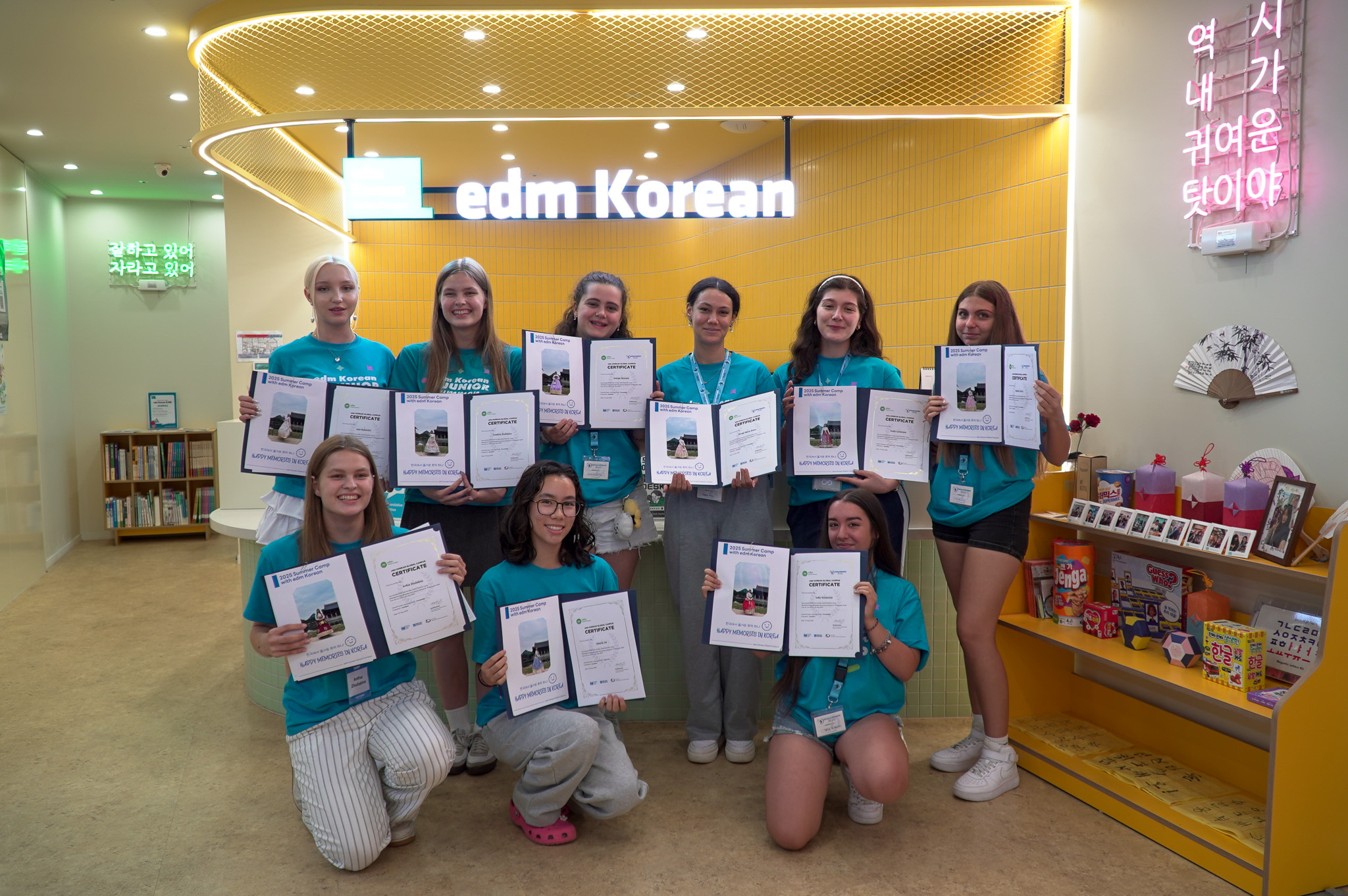The Benefits of Learning Korean Quickly
If you are a foreigner living in Korea, learning Korean will make your daily life much more convenient. You’ll be able to order at restaurants using basic Korean expressions, use public transportation with ease, and enjoy simple conversations with local friends. By following this 4-week Korean study plan, you’ll be able to read and write Hangul and confidently use essential expressions in everyday life after just one month.
Experts say that studying for 30 minutes every day is more effective than cramming for hours on weekends. In this plan, make it your goal to speak and practice Korean every single day.

Week 1 of Learning Korean: Hangul & Pronunciation
1) Learning Hangul
The very first step is to learn Hangul, the Korean alphabet. Hangul consists of 14 consonants and 10 vowels, a total of 24 characters, each representing a specific sound. It is a scientific phonetic system and considered relatively easy for beginners. Spend Days 1–3 practicing how to write and read consonants and vowels.
Study Method: Use a Hangul chart and pronunciation guide to learn each character. For example, write and pronounce consonants like ㄱ, ㄴ, ㄷ and vowels like ㅏ, ㅓ, ㅗ, checking your mouth shape in a mirror as you practice.
2) Mastering Pronunciation & Simple Words
Once you’re familiar with Hangul, focus on Korean pronunciation rules. Some sounds don’t exist in English and may feel unfamiliar, but practicing them well in Week 1 will make learning easier later. Practice differences like ㄱ/ㅋ, ㅂ/ㅍ, and final consonant (받침, batchim) sounds. At the same time, learn a few basic Korean expressions to apply right away.
▶ Week 1 Real-Life Tip! : Now that you can read Hangul, try reading signs and menus around you. At a café, practice ordering by saying: “아메리카노 한 잔 주세요 (One Americano, please).” Speaking out loud in real-life situations builds confidence quickly.

Week 2 of Learning Korean: Essential Vocabulary & Grammar
1) Expanding Vocabulary
The key to learning Korean is building vocabulary. Focus on words you’ll use in daily life, and try learning about 10 new words per day. For example, learn categories like food (fruits, vegetables, dish names), transportation (bus, subway, station names), and time & dates. Don’t just memorize—create short sentences to practice usage.
▶ Study Method : Write down new words each day, check their meanings and pronunciation, then make short sentences (e.g., “사과를 먹어요 – I eat an apple”, “오늘 월요일이에요 – Today is Monday”). Review consistently so you don’t forget.
2) Learning Basic Grammar
Once you know some words, it’s time to connect them into sentences. Korean follows Subject–Object–Verb word order, and particles mark the role of each word. In the second half of Week 2, focus on grammar basics such as: topic/subject/object particles (은/는, 이/가, 을/를), polite endings (-요 form), and simple tenses (present/past).
▶ Week 2 Real-Life Tip! : By the end of this week, you’ll be able to form simple sentences. Try introducing yourself or ordering food in Korean. For example, “저는 미국에서 온 존이에요. 반가워요! – My name is John, I’m from the U.S. Nice to meet you!” Or at a café, “아이스커피 주세요 – I’d like an iced coffee, please.” Using what you learn in real life helps you retain it.

Week 3 of Learning Korean: Everyday Conversation & Listening
1) Conversation Practice
Now that you’re comfortable with words and basic sentences, start practicing short dialogues for everyday situations. For example: asking directions, ordering food, or shopping and asking prices. Use textbooks or online resources, and read the dialogues aloud. If possible, practice with a Korean friend, or role-play both sides yourself.
2) Improving Listening Skills
Along with speaking, strengthen your listening skills. The more you get used to listening, the faster you’ll understand and respond. In the second half of Week 3, use a variety of Korean audio and video resources.
▶ Week 3 Real-Life Tip! : By the end of this week, you’ll feel confident in simple conversations. Try speaking with Korean friends or colleagues: at a convenience store say, “봉투 필요 없어요 – I don’t need a bag,” or greet coworkers with, “주말 잘 보냈어요? – Did you have a good weekend?”

Week 4 of Learning Korean: Reading, Writing & Review
1) Reading Practice
In Week 4, start building your reading skills. Reading combines vocabulary and grammar knowledge, helping you consolidate what you’ve learned. Choose simple texts like children’s books or easy Korean news articles written for learners. Guess meanings from context, then check later. Summarize the text in simple Korean sentences.
2) Writing Practice
Mid-week, focus on writing. Writing gives you time to organize thoughts and practice accuracy. Start with short daily diary entries of 2–3 sentences, such as: “오늘은 회사에서 바빴어요. 저녁에는 친구를 만났어요. – Today was busy at work. In the evening, I met a friend.” Use new words and grammar points, and ask Koreans or online communities for feedback.
3) Final Review
Congratulations! You’ve reached the final stage of this 4-week Korean learning plan. Use the last 2 days to review everything. Focus on areas you still find confusing and practice them again. Give yourself a 1-minute self-introduction in front of a mirror to see how far you’ve come.

How to Successfully Complete Your 4-Week Korean Plan
edm Korean’s 4Week General Course
edm Korean’s 4-Week General Korean Course is designed for foreigners in Korea who want to start learning Korean effectively. It’s ideal for beginners who have just learned Hangul, those who want to start basic conversations, and learners aiming to improve quickly in a short period.
- Class Schedule: 5 days per week, 3 hours per day (9:00 a.m. – 12:00 p.m.), 15 lessons per week
- Duration Options: Flexible, from 1 to 44 weeks depending on your needs
- Start Day: Every Monday, making it easy to begin anytime
- Class: Small groups of 5–9 students (maximum 12) for personalized feedback
- Levels: From Foundation to Proficiency, so every learner can study at the right level
- Certificate: An official certificate is awarded upon course completion
If your goal is to be able to order at cafés, ask directions, and hold short conversations within a month, this course is the perfect choice. With a structured and intensive program, edm Korean helps you build the skills to use Korean confidently in everyday life.



Comments
No comments yet.